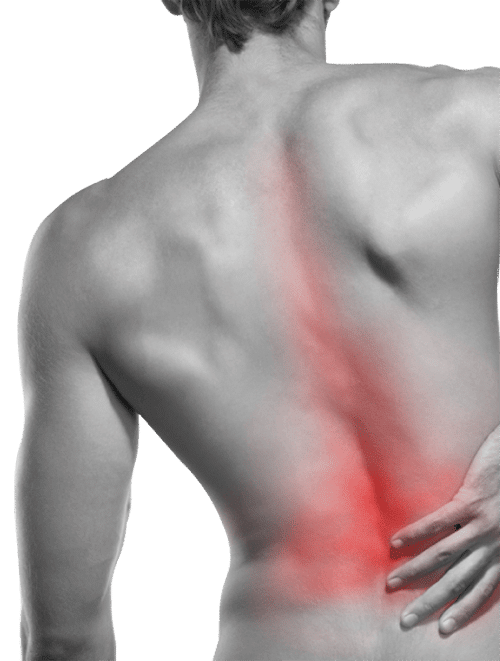Explore Your Sciatica Pain Treatment Options
Sciatica is a common type of pain that is caused by compression or inflammation of the sciatic nerve. The sciatic nerve is the longest nerve in the body and runs from the lower back down to the legs. Sciatica can be caused by a number of different conditions, including herniated discs, degenerative disc disease, spinal stenosis, and pregnancy.
Treatment for sciatica pain generally depends on the underlying cause. For example, herniated disc pain is often treated with conservative measures such as ice, heat, physical therapy, and oral pain relief medication. If these measures fail to provide relief, then interventional treatment options such as epidural steroid injections or nerve blocks may be recommended.
The best way to determine the best treatment option for your particular case of sciatica is to consult with a pain specialist. Our board-certified interventional pain specialists in New Jersey take a complete medical history, perform a physical examination, administer imaging tests, such as an MRI, and create a treatment plan that is tailored to your specific needs.
You can find our back center in New Jersey in Clifton, Paramus, Woodland Park, and West Orange. If you have sciatica pain, please schedule an appointment at your nearest back center to explore your sciatica pain treatment options.

#1. Cold Packs & Hot Packs
Applying a cold pack to the area can help reduce inflammation and pain. It is important to use a cold pack for no more than 20 minutes at a time and to wrap it in a towel to avoid injuring the skin. You can repeat this process several times a day.
Hot packs can also be helpful in relieving sciatica pain. Applying heat to the area can help loosen the muscles and reduce inflammation. It is important to use a hot pack for no more than 15 minutes at a time and to wrap it in a towel to avoid burning the skin.
#2. Physical Therapy
Physical therapy for sciatica usually includes exercises to stretch and strengthen the muscles that support the spine, as well as massage therapy and electrical stimulation. Physical therapy can help to stretch and strengthen the muscles that support the spine and may help to relieve pressure on the sciatic nerve. Physical therapy can also help to improve range of motion and flexibility. Your physical therapist will work with you to develop a personalized treatment plan that meets your individual needs.
#3. Non-Steroidal Anti-Inflammatory Drugs (NSAIDs)
NSAIDs are a type of medication that can help to reduce inflammation. Taking NSAIDs can help to relieve pain, stiffness, and swelling associated with sciatica. Some common NSAIDs that may be used to treat sciatica nerve pain include ibuprofen, naproxen, and aspirin. It is important to speak to an interventional pain specialist before taking NSAIDs because they can cause unwanted side effects, such as stomach upset, bleeding, and kidney problems.
#4. Epidural Steroid Injections
Epidural steroid injections are a common treatment for sciatica, and they can provide significant relief from the pain. Epidural steroid injections are typically performed as an outpatient procedure. The treatment involves injecting a steroid medication into the epidural space around the spine. The injected steroids reduce inflammation and swelling around the sciatic nerve, which relieves pressure and pain. Most patients see a significant improvement in their pain within a few days of the injection.
#5. Nerve Blocks
Nerve blocks are a type of regional anesthesia that numbs a specific area of the body by interrupting the nerve signals that transmit pain signals to the brain. They can be performed using local anesthetics, corticosteroids, or a combination of both. Local anesthetics work by temporarily disrupting the transmission of pain signals, while corticosteroids help to reduce inflammation and pain.
Sciatica Nerve Pain FAQs
What is sciatica nerve pain?
Sciatica is a term used to describe leg pain that radiates from the low back. This pain is the result of irritation or compression of the sciatic nerve, the longest nerve in the body. The sciatic nerve runs from the low back, through the buttocks, and down the legs. Sciatica is most commonly caused by a herniated disc, bone spur, or narrowing of the spinal canal (stenosis) that puts pressure on the nerve.
While sciatica is most often caused by a spine problem, the pain can also be caused by other conditions, such as pregnancy, piriformis syndrome (a condition involving an irritable muscle in the buttocks), and inflammation of the sacroiliac joint (SI joint). Sciatica pain can range from mild to severe and is typically worse when sitting or standing for long periods of time. The pain can also worsen when coughing or sneezing.
How do I get my sciatic nerve to stop hurting fast?
There are a number of things you can do to ease the pain of a sciatic nerve. Take a hot bath or use a heating pad on the affected area. You can also try over-the-counter pain medication like ibuprofen or aspirin. If the pain is severe, you must contact our interventional pain specialists in New Jersey to explore your treatment options.
Is walking good for sciatic nerve pain?
Sciatic nerve pain can be quite debilitating, making it hard to walk, sit, or stand. But surprisingly, walking is actually a great way to relieve sciatic nerve pain. Walking gets your blood flowing and helps to stretch out the muscles and ligaments around the sciatic nerve. This can help to reduce the inflammation and pressure on the nerve.
What triggers sciatica?
Sciatica occurs when the sciatic nerve is compressed or irritated. This can be caused by a variety of things, including a herniated disk, spinal stenosis, or pregnancy.
Is there a permanent cure for sciatica?
Yes, there are treatments that can help alleviate the symptoms of sciatica, but there is no permanent cure. The goal of treatment is to reduce the pain and other symptoms so that you can live your life as normally as possible.





